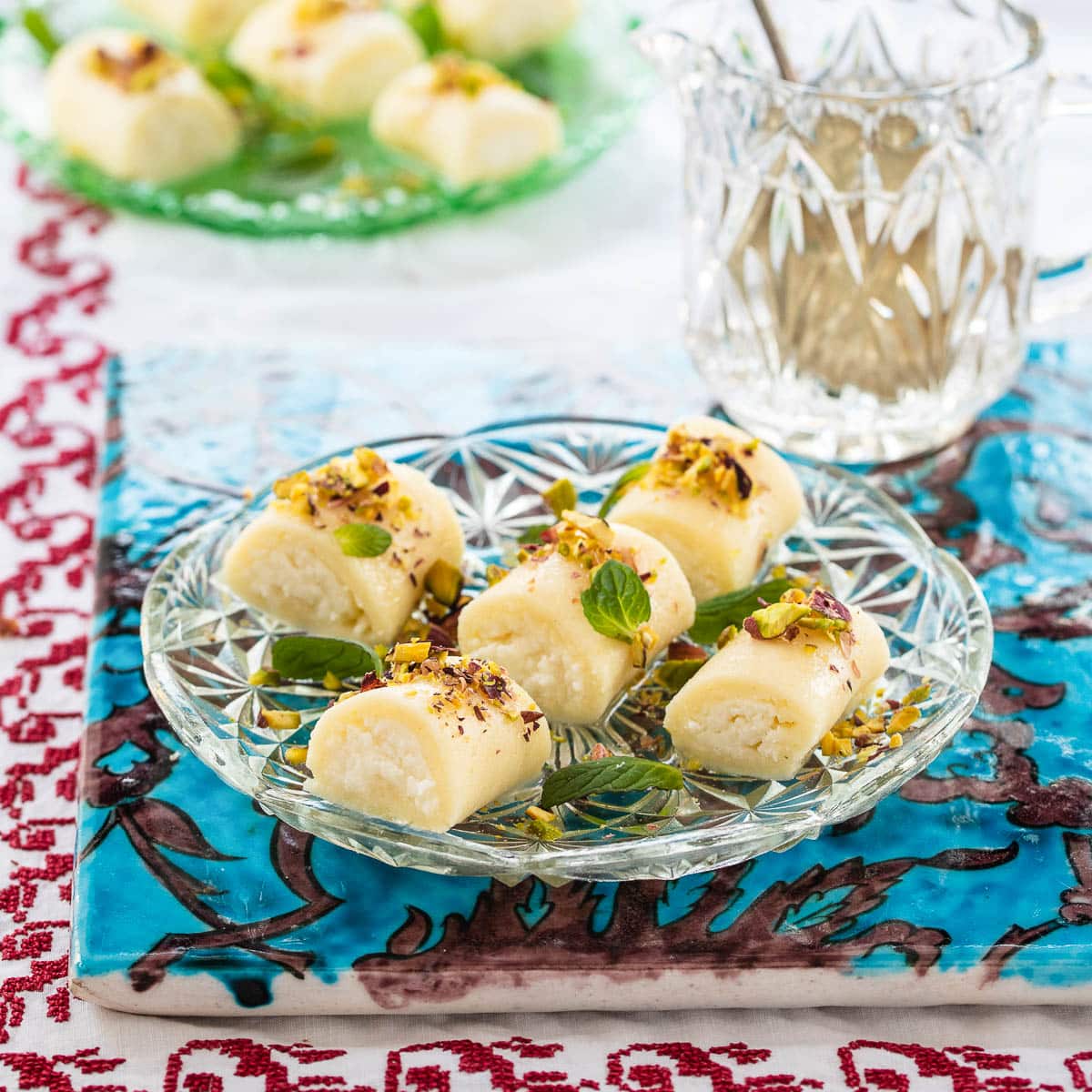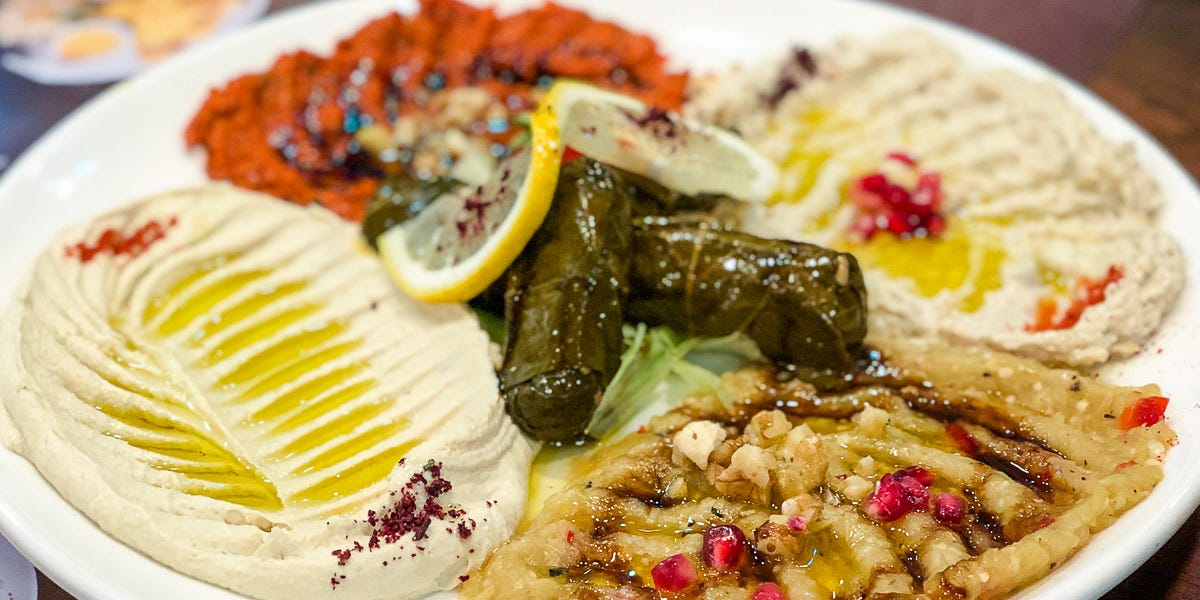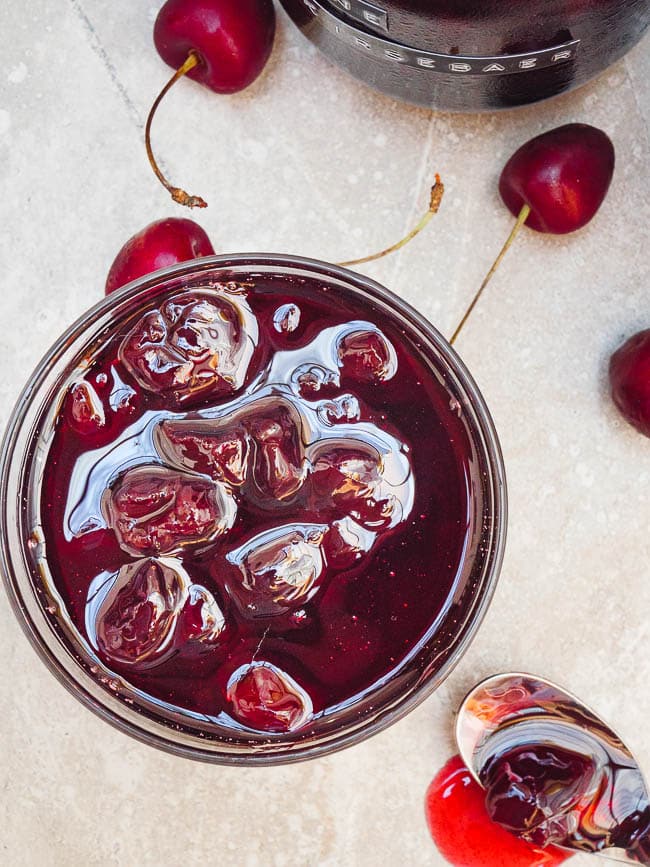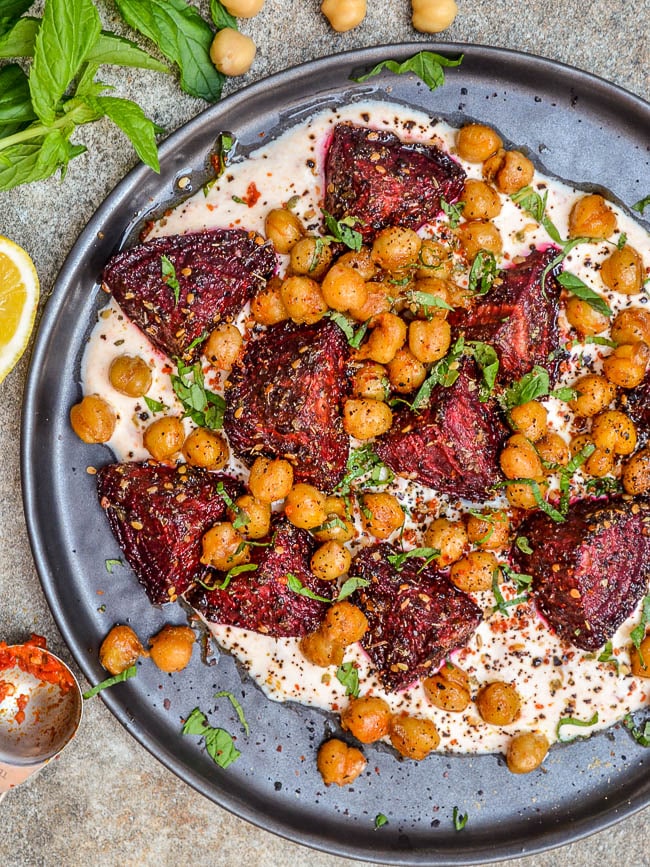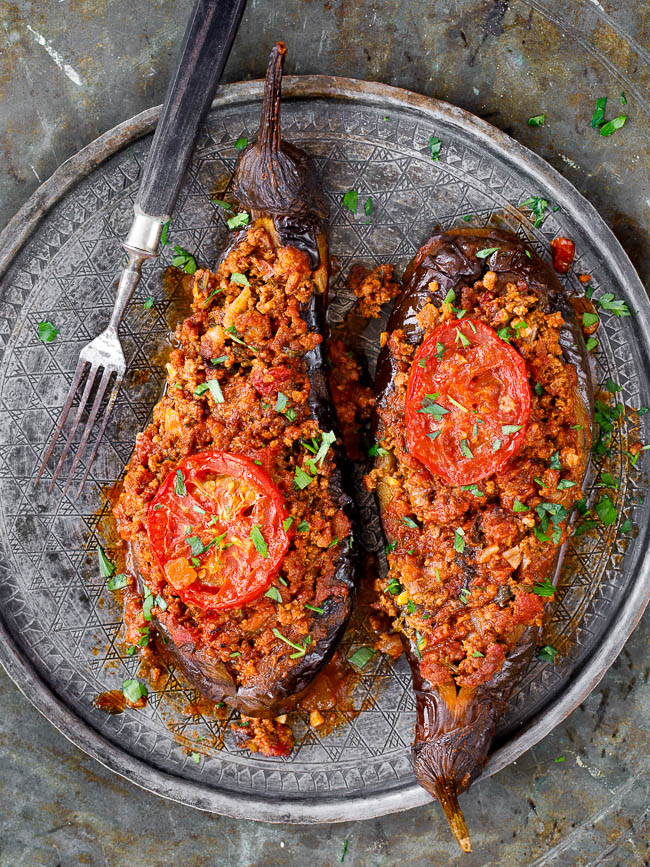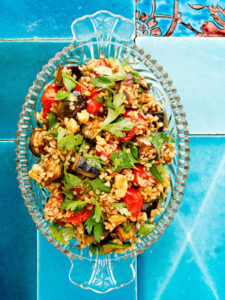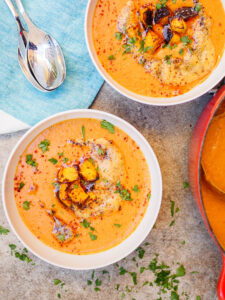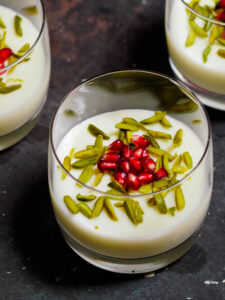Halawet el-jibn is a unique Syrian sweet made from semolina, cheese, ashta or clotted cream and a fragrant rose water syrup.
This recipe was first published in my newsletter Meze.
The “Syrian issue” in Istanbul (and Turkey)
It’s impossible to talk about this recipe without first dweeling for a second on the “Syrian issue”. It’s been apparent in Turkey for some years now. Not least during the recent election campaign.
But while the animosity towards the number of Syrians (as well as Afghans and other South Asians/Middle Easterners) has been growing in recent years, they’ve made contributions to their new homes, too.
Not least culinary ones.
Read more about the “Syrian issue” and their culinary contributions to Istanbul in my free newsletter Meze here:
How to make halawet el-jibn
One of my discoveries from the Syrian restaurants in Istanbul has been this dessert. I first enjoyed it at a small Syrian dessert shop in Istanbul, and it quickly became one of my favourites.
Luckily, it’s quite easy to make it home as well, though it may take a few attempts to get it just right.
Let me give you a few tips that might be helpful as you embark on this adventure, as well as explain a couple of substitutions I’ve made to make it doable for the vast majority of readers who don’t have access to Syria-specific ingredients.
The casing
I wasn’t sure what to call the substantive part of this dessert.
In some ways, it’s quite like a dough. But it’s also cooked rather than kneaded and cheese makes up more than a third of its substance. It’s never baked once it’s come together.
Given the dough is used to encase a delicious filling, I’ve settled for casing as the better word here.
In its original Syrian version, a local cheese called akkawi is used to make the casing. As far as I know, this is the same cheese as is used in Syrian kanafeh (künefe). A smooth, mildly salty cheese that is excellent for those legendary cheese pulls.
In other words: Not too dissimilar to mozzarella, which is what I use in its place. Note that the firm type of mozzarella (not the balls in water) works best here.
Working quickly and efficiently is important when making the casing.
Make sure you’ve got all your ingredients sorted and weighed up before you start.
Get ready for a workout as you put the cheese and rose water into the mixture. You need to stir vigorously to make sure it all comes together to a homogenous mass.
A note on measurements for the casing
I’ve only given metric weight measures (grams) for this recipe. While I try to be helpful and include American style measurements in my recipes, sometimes cups are simply too crude a measure. That’s the case here, where the relative amounts are crucial for best results.
If you have a kitchen scale, it should have a gram option on it. If you don’t have a kitchen scale, and enjoy baking from time to time, I humbly suggest you get one 🙂
The filling
The traditional filling for halawet el-jibn is ashta, a Syrian milk pudding to which fresh cheese curdles are usually (but not always) added.
In Istanbul, however, it’s often sold with a simpler filling of kaymak. If you’re not familiar with it, it’s basically the Turkish version of clotted cream – a cream so thick it’s spreadable. It’s commonly used in desserts her, like Turkish quince dessert ayva tatlısı.
Kaymak makes for a richer, but if I may say so, even more delicious version. What’s more, it’s much simpler to make, since you don’t have to make the ashta (unless you live somewhere where the latter can be bought).
I use kaymak in my homemade halawet el-jibn, but if you prefer to use ashta there are plenty of recipes for it online (it’s sometimes referred to as qashta or other similar transliterations). Since ashta is a lighter, you can use a little more of it.
Another option, while not traditional, is mascarpone. If using mascarpone, you may want to mix with a small amount of whipped cream to make it a little lighter.
The folding
The trickiest part of making halawet el-jibn is undoubtedly transforming the casing and filling into a firm roll.
It’s important to start doing this while the casing is still quite warm. The more it cools off, the stiffer and harder it’ll be to work with. So make sure your schedule is clear of distractions when making this sweet.
I like to put my filling into a piping bag (pastry bag) and use a fairly large opening. This makes it so much easier to put a tidy and even amount of filling onto the casing.
When rolling it up, try to trap as little air as possible, but be gentle enough not to squeeze the filling too much. A balancing act, I know, but it shouldn’t be too difficult. Roll it only until the filling is completely encased, then use a knife to separate the newly created roll from the rest of the casing/dough before gently closing the seam as best you can. Then, continue to make another roll.
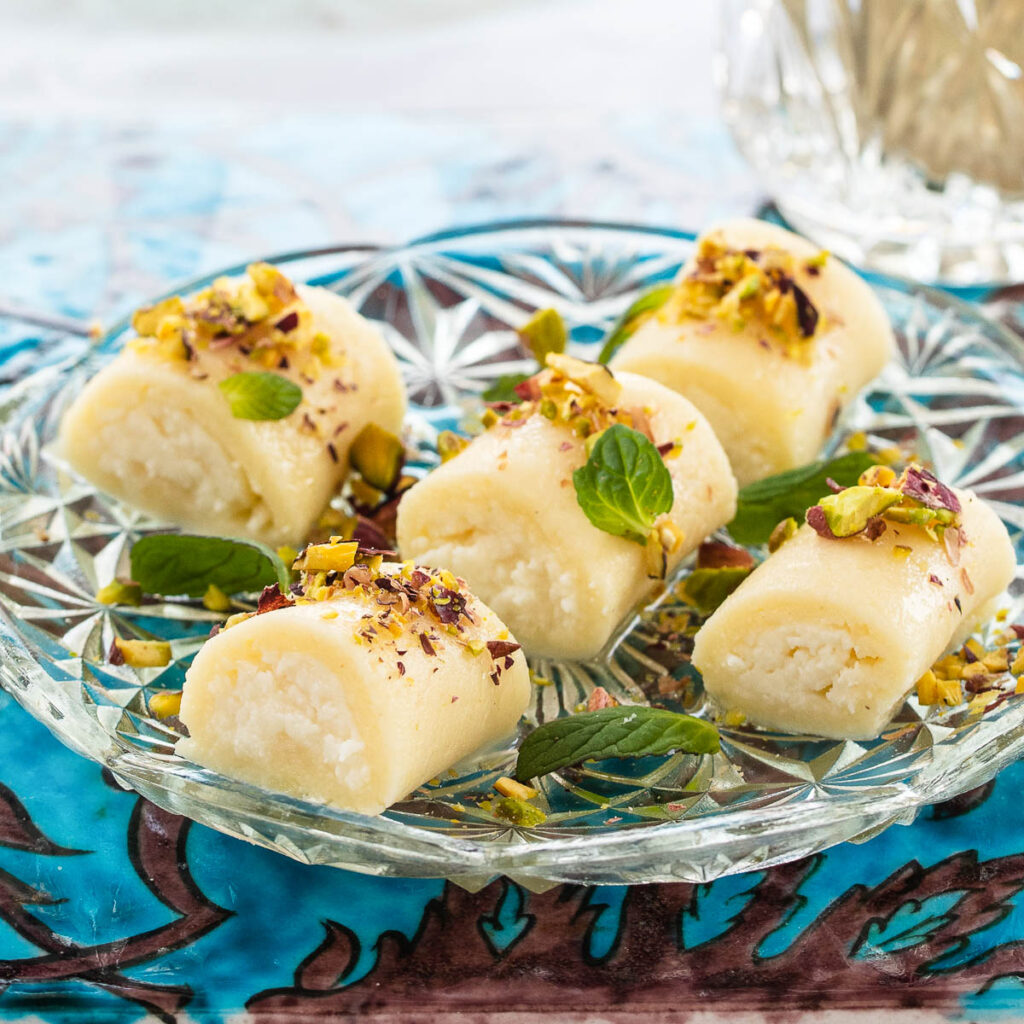
How to serve halawet el-jibn
With the dessert basically ready, I know how difficult it is to refrain from diving in.
I won’t blame you for trying a piece (or two), but don’t skip the refrigeration altogether. It helps both the whole thing firm up, making it so much easier to slice into bite-size pieces later on.
As you will no doubt notice from the ingredient list, there isn’t a whole lot of sugar in this dessert. Most of the sweetness comes from the rose scented syrup.
Please feel free to put as little or as much of it as you like, depending on how much of a sweet tooth you’ve got. Just make sure you’ve made the syrup early enough that it’s completely cooled down before serving.
A scattering of pistachios on top is a beautiful touch, though if you don’t have any it’ll also be delicious without (I wouldn’t substitute another nut here).
Serving suggestions
This dessert is best enjoyed with a hot cup of black tea. While some may prefer coffee with their desserts, that will simply overpower the gentle notes of this dessert.
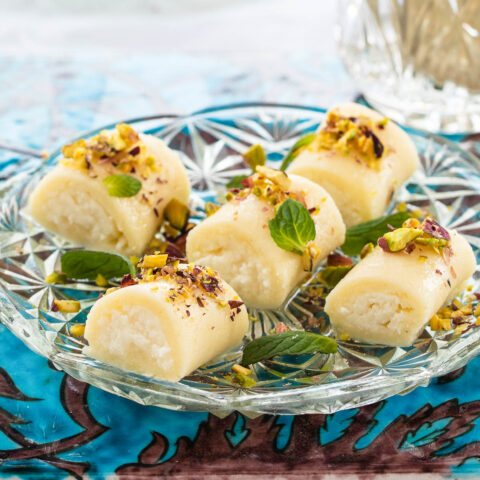
Halawet el-jibn (Sweet Syrian cheese rolls)
Ingredients
- 125 g water
- 50 g sugar
- 80 g fine semolina
- 140 g shredded mozzarella, or akkawi cheese if you can get hold of it
- 1 Tbsp rose water
- 1 handful unsalted pistachios, finely chopped
- 1 small handful mint, leaves only, sliced (optional)
Filling
- 200 g kaymak, or clotted cream or ashta
- 1 Tbsp icing sugar, powdered sugar (optional)
Rose scented honey syrup
- 75 g honey
- 50 g water
- 1 tsp rose water
How I make it
- Make the rose scented honey syrup by adding the honey and water to a small pot. Bring gently to a boil and leave to simmer for one minute. Take off the heat and add the rose water. Cool completely.
- Make the casing by adding the water and sugar to a wide, thick bottomed pot. Place over medium/high heat until the sugar has completely dissolved, stirring regularly.
- For this next part, work quickly. Add the semolina, stirring constantly until slightly thickened. This takes just a few seconds. Turn the heat down to low, then immediately add the mozzarella and rose water. Stir vigorously until the cheese is melted and you have a homogenous mass. Take off the heat and leave to cool for a few minutes, until the casing has reached a temperature you’re comfortable working with (it should still be warm).
- Place a large piece of cling film (plastic wrap) on your kitchen counter. Place the casing dough on the cling film, then add another layer of cling film on top. Using a rolling pin, roll the casing to 1 rectangle of approximately 35 x 25 cm (13¾ in x 10 in).
- Mix the kaymak or clotted cream with the icing sugar. Add to a piping bag and make a c. 2 cm (⅘ in) diameter opening at the end. (If you don’t have a piping bag, you can always just use a spoon to put the filling on the dough. A little messier, but it also works.)
- Remove the top layer of cling film from the casing. Add a generous amount of filling approximately 2 cm (⅘ in) from the edge. Grab the bottom layer of cling film and wrap the casing around the filling as tightly as you can. Cut the casing exactly where it goes full circle. Use your hands to gently press the seams together until you have a nicely sealed roll. Repeat until you’ve used up all the casing or filling.
- Cover the rolls and leave in the fridge for at least one hour. This helps the dessert firm up.
- Once ready to serve, cut into bite size pieces. Top with the rose scented honey syrup, chopped pistachios and fresh mint.


